Cycle after cycle, men and women tirelessly volunteer their time and expertise in the electrical industry to meet together to forge yet another version of the NEC — this year the 2014. As I sat beside and observed these hardworking volunteers, I was reminded of an earlier group who were similarly engaged.
Their particular quest was to refine and provide clear, consistent language that would assist installers across the electrical industry find a single place, that will provide a single location, to terminate the grounding conductors supplied with the many types of electronic audio and video equipment that we use daily in homes and workplaces.
In this article we will look at what theNational Electrical Code (NEC) provides for us in the way of a location for the grounding termination of the many electronic systems that currently occupy our households, and how the requirements have evolved and how the industry has grown to meet the challenges. Finally, we will see where we are headed and what challenges yet lay ahead.
The Landscape
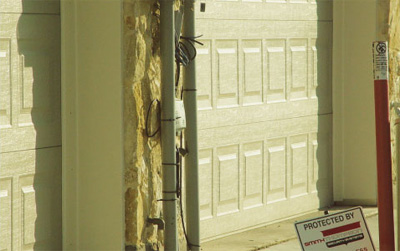
Photo 1. Prior to the installation of an intersystem bonding device, it’s easy to see how a clutter of conductors forms.
This small and all but forgotten place has for most owners become a superhighway of many types of conductors large and small, attached to the outside of many buildings. All of these conductors are on a single mission — a grounding path to earth.
Unfortunately, most don’t understand the seriousness of the term grounding, particularly when it comes to sensitive electronic devices; experiencing the loss that can occur when the equipment that is attached to these conductors has been introduced to voltages that it is not designed for or is not accustomed to can be costly and unsafe.
The unfortunate part is that when these events occur, many times the means to effectively conduct and convey the transient voltages have often been compromised by years of neglect and disrepair.
With the advent of less and less metallic piping being used in homes and workplaces, many paths to ground and means of bonding these conductors have vanished from the built environment, some literally forever.
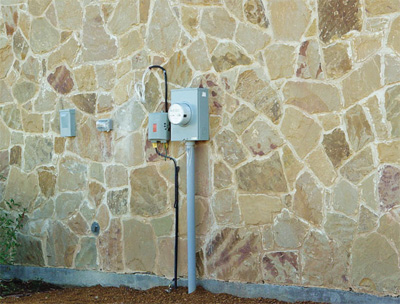
Photo 2. A clean workmanlike installation waiting for termination
Therein lies the difficulty for installers and inspectors alike. It’s time for a change.
Taming the Beast
Do you recall the carefree days when you were on the service truck and it was time to go and hook up another piece of equipment that required you to don the armor as you ventured into a no-man’s land of endless termination, after termination, some without meaning, some barely hanging on.
Yes, we have all been there and have had to find or remove, or combine, etc.
This was and is still in many places the final frontier, the last termination, the end of the road for that last wire, often thought of as the nuisance wire. It is important to note that this conductor too serves a purpose, and is not to be blatantly cut off or removed.
Often discarded, modified, or worse, never terminated at all, this wire is many times the only means provided to remove stray current or transient voltage from the device. It is also the path that will reduce potential for possible shock, due to the buildup and ultimate discharge of this stray voltage.
A Common Conductor

Photo 3. Location is critical to accommodate A/V and other sensitive electronic equipment grounding.
Singular is the path of this conductor that many folks in the communication world know as the “grounding conductor” after a refining of theNECand a harmonization of many of the terms. More importantly, the industry struggled with a way to clean up all of the terminations that were landed time after time, many just left attached after years of non-service leading to clutter, and sometimes the removal of the entire conductor itself, leaving a potentially dangerous condition.
Finally after years of use and abuse, the grounding conductor and the growth of appendages, now looking like a prickly pear of copper and stranded conductors, was still the only thing available at the time, and as mentioned before, became part of the landscape. Well, it was a foregone conclusion that we here in the good ole U.S.A. had a love affair with music, which soon was followed with television and all of the devices that could bring them right to our eyes and ears. These copper cacti of the inner city continued to grow and grow until we didn’t have a real good way to terminate them anymore.
Where Has All the Metallic Piping Gone?
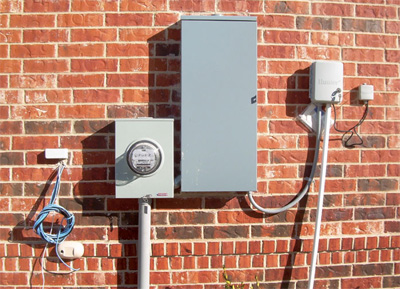
Photo 4. Is this your house?
The quest we spoke of earlier is upon us. With the use of non-metallic piping becoming more prevalent, our sources for termination have also diminished. Here is how the group of code champions attacked the problem. A new term was introduced, intersystem bonding; now, we needed to know what to do with it. This is the term for what we are doing at that nest of wires, outside of every building in America and all over the world. Well, the term was born, standards were written, and equipment produced.
New Rules and a Solution
Here’s where the NEC comes in with 250.94. While we called it intersystem bonding, we still needed some guidelines to follow. In the 2008 NEC we started with three simple criteria:
1. A set of terminals securely mounted to the meter enclosure and electrically connected to the meter enclosure. The terminals shall be listed as grounding and bonding equipment.
2. A bonding bar near the service equipment enclosure or raceway for service conductors. The bonding bar shall be connected with minimum 6 AWG copper conductor(s) to an equipment grounding conductor(s) in the service equipment enclosure, meter enclosure, or exposed non-flexible metallic raceway.
3. A bonding bar near the grounding electrode conductor. The bonding bar shall be connected to the grounding electrode conductor with a minimum 6 AWG copper conductor.
Photo 5. Long gone are the days of conductor clutter.
In addition to the abovementioned requirements, the intersystem bonding termination is required to be maintained accessible for connection and inspection. The device or piece of equipment used to make an intersystem bonding termination is required to have a minimum of three points of connection to accommodate three bonding conductors for interconnection. Lastly, but not to be underscored, the device or piece of equipment used for intersystem bonding cannot interfere with the opening of a meter or service enclosure.
With change comes refinement. The 2011NECagain clarified existing terminology for 250.94, and polished it up with cleaner language and incorporated the requirements into an easily followed list of requirements. Lack of interconnection of these systems can result in severe shock or fire hazards due to the differences in potential from these systems.
Remember electricity will take any and all paths to attempt to return to its source. In the event of a lightning strike or an accidental contact with power lines, it is extremely important to ensure there is a low-impedance path back to the source for the safe dissipation of the energy.
The Conquerors
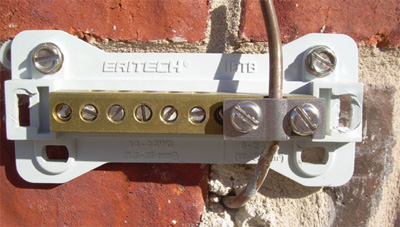
Photo 6. Now we are organized and safe.
We have seen what our challenges were in the desire to have a common location to provide sound grounding and bonding which are vitally necessary to the long life and continued operation of the many types of equipment we utilize in homes and workplaces. We have also seen what has happened to our sources for grounding and bonding over the years with the advent of more and more plastics being used in the built environment, lessening our opportunities for termination to a good solid ground.
Ultimately we have also seen how a group of tireless professionals, many of whom are rank and file members of a little organization called IAEI rose again when called upon — like so many of us do — to meet the challenge with good, clean and enforceable code language that provides our safety net.
The Future
With change comes promise, and this author can promise you that there will be no shortage of new shiny gadgets in the future to thrill our imagination, to fill our homes with music and to max out every receptacle that we can find to fill up! But if we plan and continue to follow the requirements of the code, we will most certainly be safer than without it.





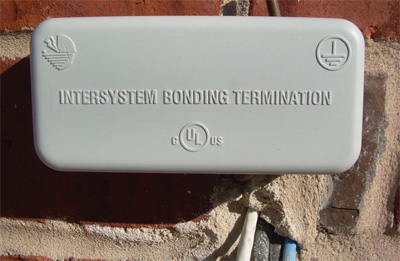








Find Us on Socials